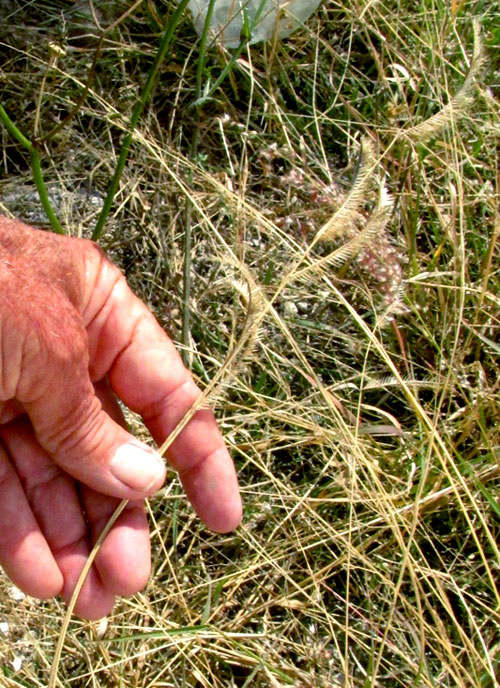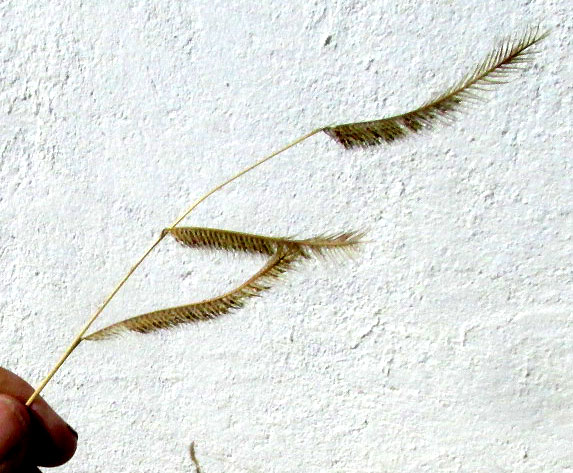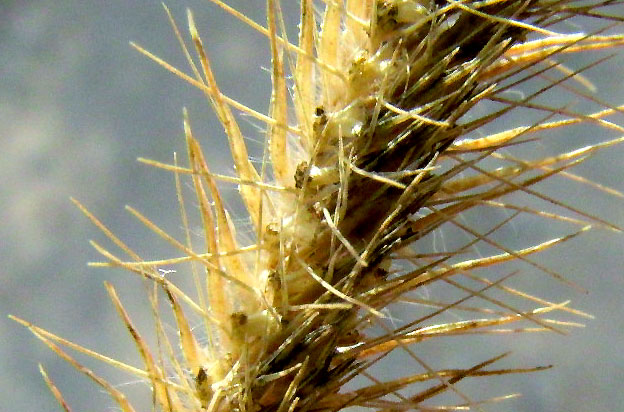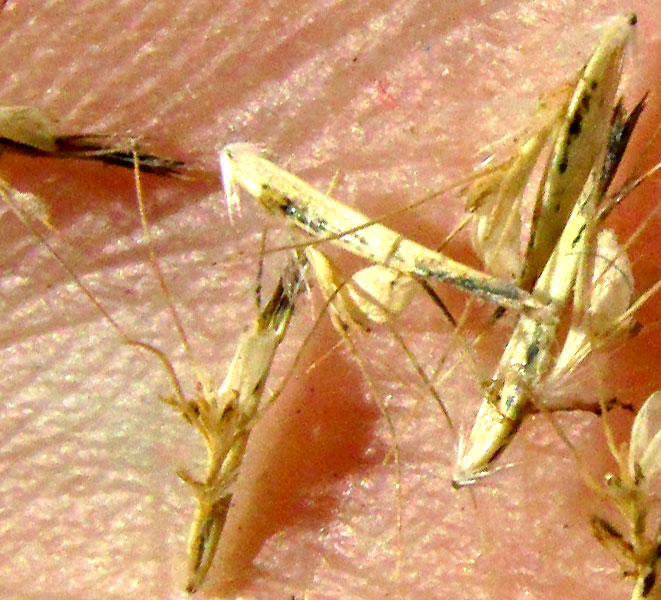Excerpts from Jim Conrad's
Naturalist Newsletter
entry dated December 31, 2022, issued from near Tequisquiapan, elevation about 1,900m (6200 ft), ~N20.57°, ~ W99.89°, Querétaro state, MÉXICO
BLUE GRAMA, DRIED UP

At a village's edge, wedged between a dirt trail and the white-stuccoed wall around a house, a variety of weeds, mostly grasses, thrived amid heaped-up rocks and trash, shown above. Here this year the rainy season never developed, and now the usual dry season is getting underway, so the weeds were crisply dried out and faded. Still, our grasses managed to produce a decent crop of caryopses-type fruits, handsomely arrayed in inflorescences consisting of two or three slender, eyelash-shaped branches growing on one side of each rachis, shown below:

Here's a view up close showing individual spikelets crammed together on the lower side of a rachilla:

A view of the spikelets from below the branch reveals a spiky forest of orderly meshed, stiff but pliable bristles.

Nearby, one grass already had lost most of its spikelets, enabling a clearer view of the remaining florets' structure:

In the above picture's center, all that remains on the rachis is the glumes, of which some bear at their tips needle-like awns. I'm unsure what the white substance is among the glumes on the picture's right side -- maybe a dried fungal infection. The two dark, thicker items at left are florets, each containing a caryopsis. Note that the lemmas are lobed at their tip, with the center lobe bearing a slender awn which is flanked by sharply pointed side lobes. If you crumble a fruiting branch, here's what you get:

In the above picture, the lower, left quarter is mostly occupied by two florets which fall as a unit. The floret on the left side of the unit produces long bristles but is sterile. Behind the sterile floret and to the right of it is the caryopsis-type fruit covered by its lemma and palea, the lemma also issuing bristles.
The inflorescence's more-than-one, eyelash-shaped side branches with spikelets all arising on the rachillas' lower sides, and each spikelet consisting of just one fertile floret, all lead to the genus Bouteloua, the grama grasses. Sideoats Grama, Bouteloua curtipendula, is the State Grass of Texas.
However, this isn't that species. The genus comprises about 40 species, most of them Mexican, so which is this?
With the inflorescence's two or more relatively long, eyelash-like branches tending to one side, the plants being perennial bunch-grasses, the rachilla not extending as a stiff point beyond the flowered part, and more than 30 spikelets occupying the rachilla's lower side, our plant announces itself as what's usually called Blue Grama -- though many can't resist the name Eyelash Grass -- BOUTELOUA GRACILIS.
In western North America's and northern Mexico's vast grasslands of former times, Blue Grama along with its close relative Sideoats Grama, were very important ecological components, serving as excellent forage for large herbivorous mammals like the bison, often called buffalo. As the Flora of North America says, "Irrigation has converted much of the area they once occupied to agricultural use, but large areas of Bouteloua grasslands remain."
In our highland, central Mexican, much-overgrazed scrubby area, Blue Grama is present but not common, more often turning up in disturbed weedy sites than in relatively undisturbed ones.